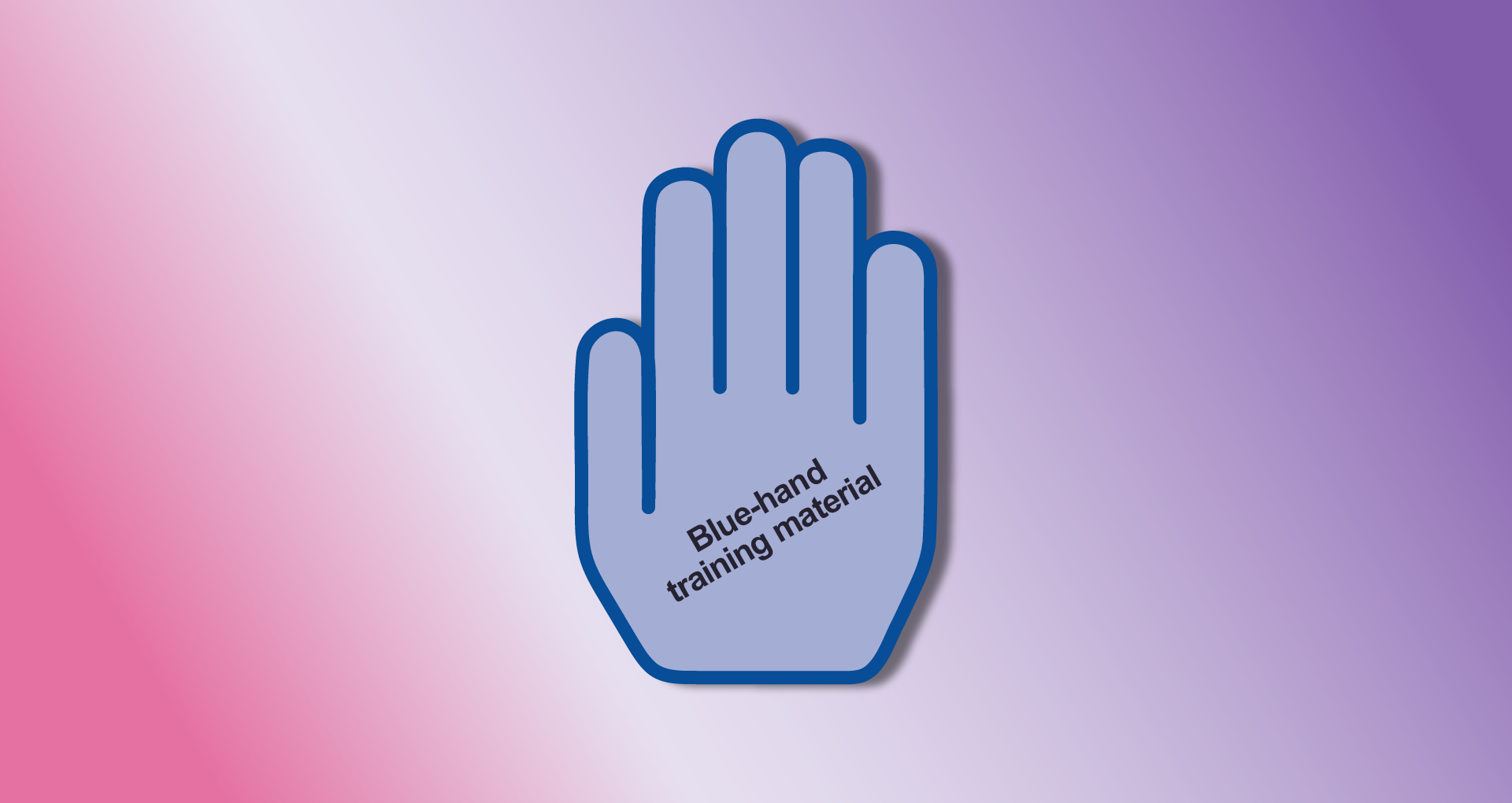Blue-hand training material – Meaning, application and benefits in the pharmaceutical industry

Content
What is the Blue-hand training material?
The Blue-hand training material is a specially developed information package that contributes to the safe use of certain medicinal products in the pharmaceutical industry. It is an integral part of the Risk Management Plan (RMP) and is produced by pharmaceutical companies in collaboration with the relevant regulatory authorities. The aim of these training documents is to inform healthcare professionals and patients about the risks, correct use and safety aspects of certain medicines.
The “Blue-hand” concept is based on EU pharmaceutical legislation and serves as a seal of quality for official training materials. These materials are specially labeled and are approved by the higher federal authorities such as the BfArM (Federal Institute for Drugs and Medical Devices) or the PEI (Paul Ehrlich Institute) when the drug is approved. They ensure that all parties involved receive the necessary information to minimize risks and guarantee the safe use of medicinal products.
Why is the Blue-hand training material necessary?
Risk management in the pharmaceutical sector is essential to ensure the safe use of medicines. While the regular information for healthcare professionals and instructions for use already contain comprehensive information, this is not sufficient for some medicines. Additional training is required, particularly for medicines with a high risk potential or special handling requirements.
The Blue-hand training material is used in particular for the following classes of medicines:
- Biologics and biosimilars, where special storage and injection requirements apply.
- Cytostatics and oncologics, which can be associated with significant side effects.
- Vaccines that require specific application guidelines.
- Medications with a high risk of medication errors, such as anticoagulants or opioids.
These training materials ensure that doctors, pharmacists and patients are aware of all the necessary safety precautions and implement them correctly.
Content and structure of the training materials
The design of the Blue-hand training material follows a uniform and clearly structured layout, which is adapted depending on the medication and target group.
Typical components are:
- Product-related safety information: Detailed explanations of dosage, contraindications and interactions.
- Application guidelines: Information on correct intake or application, especially for special dosage forms such as injections or infusions.
- Side effect management: Information on possible adverse drug reactions and how to deal with them.
- Checklists and training materials: Visual instructions, training videos or interactive e-learning modules for support.
- Patient education: Information formulated in easy-to-understand language for safe use in everyday life.
These materials are often available digitally to enable flexible use and can be used by healthcare professionals in training courses.
Regulatory requirements and approval process
The Blue-hand training material is subject to strict regulatory requirements defined by national and international health authorities. Pharmaceutical companies are obliged to submit and have the training materials approved at the time of drug approval or as part of risk management.
In Germany, the review is carried out by the BfArM or the PEI, which ensure that the materials are correct, scientifically sound and patient-friendly. Pharmaceutical companies must:
- Demonstrate that the educational materials meet the safety requirements of the risk management plan.
- Use clear and concise language to avoid misunderstandings.
- Regularly revise and adapt to new scientific findings.
- Ensure that the materials are accessible to all relevant stakeholders.
The Blue-hand training material may not be used without authorization. Violations of these requirements can lead to regulatory consequences and jeopardize drug approval.
Conclusion: Importance for Pharma-Marketing
The Blue-hand training material plays a central role in Pharma-Marketing and in communication with healthcare professionals and patients. It offers a valuable opportunity not only to inform doctors and pharmacists, but also to introduce them to the safe handling of certain medications.
This results in various advantages for pharmaceutical companies:
- Strengthening brand safety: Targeted training programs reduce the risk of application errors and increase confidence in the product.
- Improved compliance: Doctors and medical staff are more likely to adhere to prescribed applications if they are supported by high-quality training materials.
- Differentiation in the market: Companies that provide innovative and well-prepared training materials stand out from the competition.
- Digital marketing strategies: Through digital training platforms or interactive tools, the Blue-hand concept can be optimally integrated into online strategies.
Ultimately, the Blue-hand training material not only supports drug safety, but also serves as a valuable tool for sustainable customer loyalty and brand strengthening. Pharmaceutical companies that make strategic use of this area can secure long-term competitive advantages.
